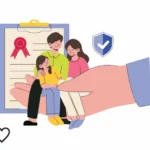Many entrepreneurs share a common frustration: investing in marketing that doesn’t seem to connect. You create content and run ads, but it feels like you’re speaking to everyone and no one at the same time. That silence can be discouraging for a growing business.
The answer isn’t to be louder, but to change your approach. It’s time to stop pushing a generic message and start a relevant conversation, and this shift begins with a simple principle: listen before you speak. The process of customer segmentation is your tool for organized listening, helping you build buyer personas that serve as strategic guides for your marketing.
Don’t worry, this guide won’t give you another template to fill out. Instead, it will show you how to find the answers already within your business. You’ll learn to turn those insights into a clear roadmap for making smarter, more human marketing decisions that get results.
Listening to your customers through data (where the answers already are)
The word “data” can seem complex, but it’s really just the information your customers leave behind. Your job is to act like a detective, searching for valuable clues without needing expensive tools. You don’t need a massive budget to understand your audience; you just need to know where to look.
The clues inside your own business
Your business is already a source of rich customer information. The key is knowing which sources to tap into. These internal clues are often the most reliable foundation for effective customer segmentation.
A great starting point is your website’s analytics. Focus on the simple stories the numbers tell. Where do your visitors come from? Which pages do they visit most? Their path through your site reveals what they value and what problems they’re trying to solve.
Your sales and support conversations are another invaluable source of insight. What are the top questions you hear from customers? Note their most common objections and the exact words they use. This language is essential for speaking directly to their needs. Many businesses are even using a WhatsApp chatbot to manage initial queries, which creates a helpful log of frequent customer pain points.
Finally, consider a simple one-question survey. Send a straightforward email to your loyal customers asking, “If you were to describe us to a friend, what would you say?” Their answers will reveal how they see your greatest strengths, giving you the core of your marketing message.
Connecting the dots: how to be sure you’re on the right track
A single clue can be misleading, but a pattern points toward a real insight. The secret to accurate personas is finding patterns across different data sources. When multiple clues point in the same direction, you’ve found something reliable about a customer segment.
A practical method for this is “cross-confirmation.” If your analytics suggest your most engaged audience is from a particular industry, do your sales records confirm this? Do your social media interactions reflect the same trend? If you can confirm an insight from three different sources, you have a fact, not a guess. This process validates your assumptions.
Technology can also help you scale these insights. For instance, after identifying a key segment, you might want to communicate with them more directly. Learning how to manage a WhatsApp broadcast is an effective way to share targeted information with a group that has shown similar interests.
AI tools can also assist in this pattern-finding process. You can paste text from customer reviews into an AI tool and ask it to summarize the main problems mentioned. It can identify recurring themes in minutes, saving you hours of manual work.
Turning data into dialogue (building the persona)
With your insights in hand, it’s time to translate those clues into a sketch of your ideal customer. A buyer persona is a useful summary of a real group of people, keep this in mind. Its purpose is to give a human face to your data, so you can talk to someone, not at a crowd.
A persona’s value isn’t in its design, but in the clarity it brings to your strategy. It should serve as a constant reference, helping you answer one question before any marketing action: “What would
Persona′sName
think of this?”
The 3 traps that turn personas into fictional characters
Creating personas can easily go wrong, resulting in a document that is more decorative than useful. Being aware of common pitfalls is the first step to ensuring your efforts produce a strategic asset.
The first trap is the “Serves Everyone” Persona. This profile is so broad it represents no one in particular, filled with vague statements like “is budget-conscious.” To avoid this, focus on your single best type of customer—the one you wish you had a hundred more of. Get specific about their goals and challenges.
Next is the “Dream Customer” Persona, based on who you wish your customer was, not who they actually are. This happens when biases cloud the data. Be honest with the clues you’ve found. Acknowledging their real pain points is the only way to genuinely connect.
Finally, beware of the “Museum Piece” Persona—the one you create and then file away forever. Treat your persona as a living document. Keep it visible and use it as a checklist before you post on social media or send an email. It should be an active part of your daily work.
The “so what?” test: how to make your persona truly useful
For every piece of information on your persona sheet, ask yourself, “So what? How does this change what I do?” If there’s no clear answer, the information is clutter. This simple test transforms a list of facts into a strategic tool.
For example, if your persona, “Startup Sarah,” follows productivity influencers, so what? This tells you your content for her needs to be direct and results-focused. Checklists and quick tips will work better than long articles.
Or perhaps “Manager Mike” is short on time and dislikes complicated checkouts. So what? The immediate action is to simplify your purchasing journey. Your goal should be to get him from product to payment in just a few clicks. Your messaging for him should emphasize speed and ease.
From guesswork to growth: your next step
Effective marketing doesn’t come from a complex formula. It comes from a simple truth: listen first, act second. Customer segmentation and buyer personas are your tools for organized listening. They empower you to stop guessing what your customers want and start giving them what you know they need.
You don’t have to be a data expert to connect with your audience. You just have to be a good listener. This process is about being smarter with the resources you already have.
Don’t try to create five personas today. Start small. Think of one real customer you enjoy working with. Describe them on paper. What are their biggest struggles that your business helps solve? That simple exercise is the start of everything. It’s your first step toward a conversation that matters.














